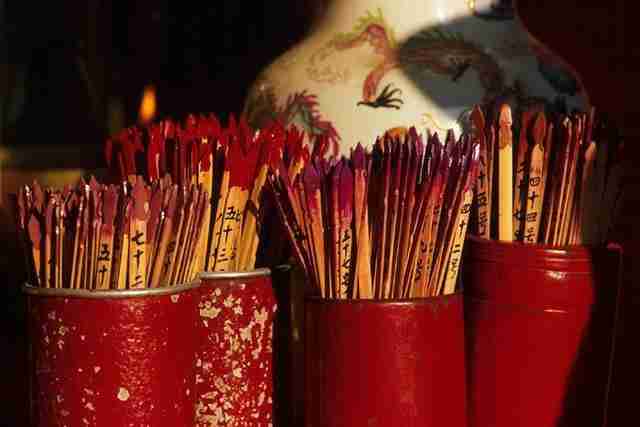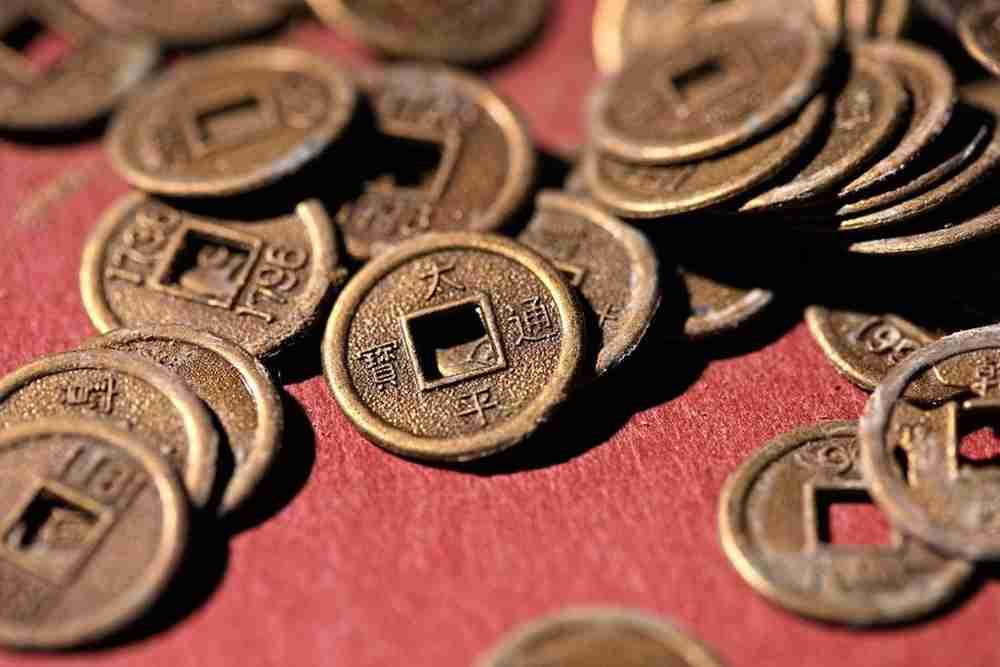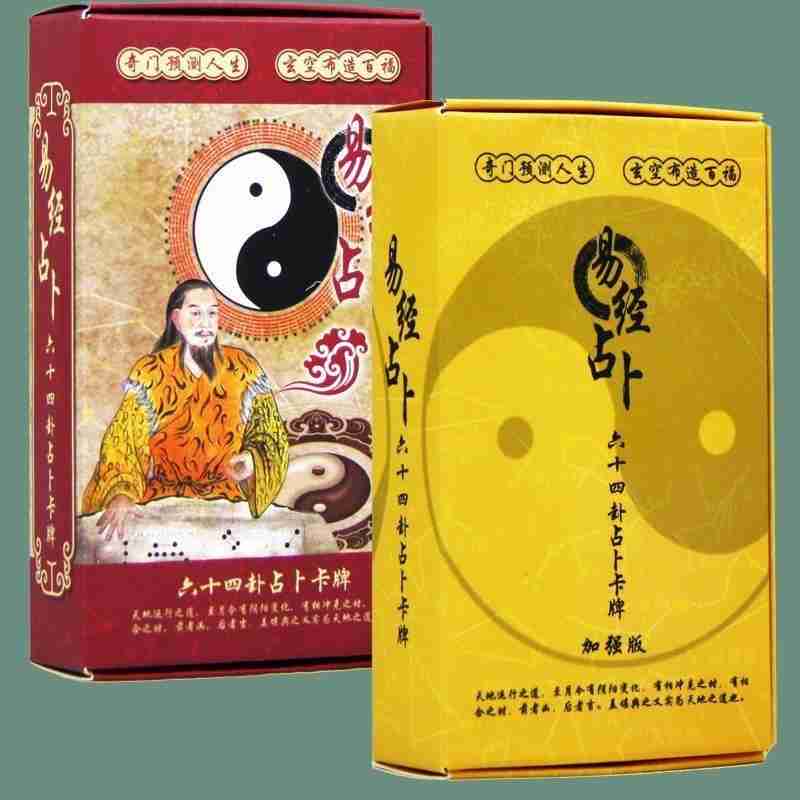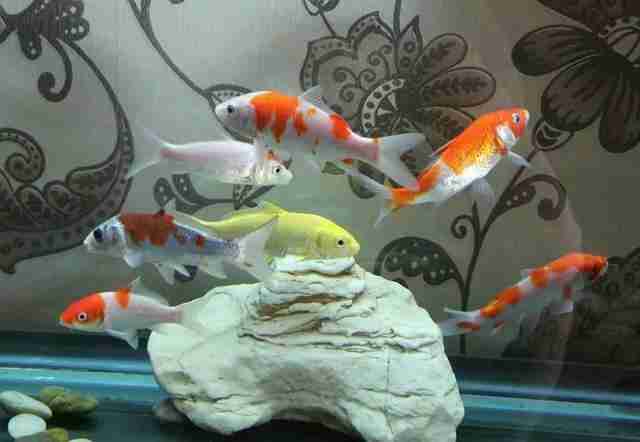Fortune Telling is an integral part of Chinese social patterns and culture, and it has a few similarities to fortune telling in the west. You can easily find fortune tellers at temples throughout China, such as the Taoist Temple and the Jing’an Temple, among others. They are popularly known to hang outside the temples but you can find some located inside the temple. Besides that, you can find them in temple fairs and big night markets. In this write-up, we will go over a few fortune telling basics and we will explain how it is done in China to help you understand the concept better, should you wish to have your fortune told.
Why is fortune telling an important part of Chinese culture?
Chinese fortune telling, which is known as Suan Ming or Mingli Shi, is considered an art and an integral part of Chinese society. Since time immemorial, the Chinese have been consulting fortune tellers, alchemists and soothsayers. In fact, fortune telling is a respected career and a very important part of social and business culture in Chinese society. Generally, the Chinese have a strong belief in predestination and for this reason alone, they have multiple methods that get rid of bad luck and some that help bring fortune and wealth to one’s life.
At the same time, fortune tellers in China take on a role which is equivalent to psychotherapists and management consultants in the West. This is mostly because the fortune tellers’ advise entrepreneurs and business people on various investment options and decisions, and nearly everyone else seeks the input of fortune tellers in their lives. They also discuss and resolve personal issues away from stigma and other conflicting situations. Along with that, fortune telling is valued for its entertainment value. The Chinese consider it as thrilling as live magic and love to watch the art of fortune telling.
The fortune tellers often analyze personal information such as date of birth, name, and body features to provide tips that can help you avoid bad luck in your life or to predict your destiny. The Chinese believe that fortune telling is greatly associated with the concept of yin and yang, and the most commonly used fortune telling methods are Shouxiang and Mianxiang, which predict your fortune by reading your palm and facial features. As you walk on the streets in China, you will notice some fortune tellers with a map on the ground, or you may get approached by one who asks to take a look at your hand.
Chinese Fortune Telling Sticks

This fortune telling practice, which is popularly known as Kau Chim, Qiu Qian, or Lottery poetry, originated in China and it is often performed in either a Buddhist or Taoist temple in front of an altar. The people in the Western society refer to Kau Chim as Chin Tung or the Chinese Fortune Sticks. The practice of using Chinese fortune telling sticks dates back to the Jin dynasty and the prediction starts with the cup storing a significant number of sticks.
Once the person asking the questions/fortune teller has finished their devotions to the main deity, they purify the cup/cylinder by revolving it around the incense burner 3 times before mixing the sticks by hand. He/She then kneel in prayer, holding the cup between their palms then they ask their question to the deity. When doing this, they could either shout out the questions loudly or whisper to the deity. When asking questions, the querent should never hesitate on the questions neither should they shift the questions in the middle of the rite.
As the fortune teller shakes the cylinder, the end result is one stick leaving the cylinder and being dropped on the floor. Each stick has a designated number and it represents one answer to the questions. The designated number corresponds to one of the hundred written oracles that have an answer on it. The writing on the piece of paper then gives a clear answer to the question. Sometimes, to confirm the validity of the answer given by the diety, the fortune teller tosses jiaobei blocks. If at all multiple sticks fall from the cylinder, the fortunes do not count and the fortune teller will have to begin the shaking process all over again.
Chinese Fortune Telling Sticks Interpretation
If a successful fortune is realized, interpretation is done by a temple priest or volunteers, so that you can understand the answer. The interpreter often has a book of Chinese stories and poetic phrases and the interpretation is short-ranged. As you seek interpretation, you should know that the interpreter often charges a small fee and may offer other services such as face or palm reading. Besides that, it is important to know that the accuracy of the prediction entirely depends on the interpreter, so you may want to run the result across different interpreters and compare notes. All in all, the interpreted answer is often a historical Chinese story re-told in the modern sense. The story is simply the forthcoming event that you are about to experience.
Reading of the 64 Chinese Fortune Telling Sticks
Chinese Fortune telling sticks have been packaged in a more accessible and comprehensive manner so that everyone else can be part of the fortune telling process. In the Chinese Fortune Telling Stick package, you will find 64 bamboo divination sticks, a wooden shaker that exudes good luck and a thoroughly illustrated book that contains newly translated and simplified divinatory poems. Each of the poems are based on 5 sets of original texts and they are the perfect option for new-age fortune telling enthusiasts and serious spiritualists alike.
Once you have addressed a question to the heavens, you should place the sixty four sticks, each individually numbered in a sacred container/cup marked with the unique and special Chinese character for spiritual blessings. Once done, shake the cup until one stick falls out. When studying the stick, you will notice that its number corresponds to a thought-provoking poem whose meaning is applied to the situation or problem at hand. Through this poem, the gods offer their guidance. You can seek the services of an expert fortune teller if you do not seem to understand the message.
Chinese Fortune Telling Coins

Chinese fortune telling coins form part of I Ching divination, which is a form of fortune telling that uses random numbers. The I Ching text features 64 hexagrams: 6-line figures of yang (solid) lines or yin (broken) lines, and different commentaries on them. The fortune tellers use two main methods of building up the lines of the hexagram, using either three coins or 50 yarrow sticks. Some of the lines are sometimes designated ‘old lines’. When this happens, they are subsequently changed to create another hexagram. The text that relates to the old lines and the hexagram is then studied and the meanings derived from that study is directly interpreted as an oracle. The interpretation of these readings is often used by fortune tellers to provide guidance for moral decision making, career, and life decisions, as informed by Taoism, Buddhism, and Confucianism.
Chinese Fortune Telling Cards

The Chinese Fortune Telling cards have been a source of fascination for many. They are based on a pre-historic Chinese divination system that is known as the Oracle Bones Script. This divination system has its roots in mysterious Shang Dynasty engravings and they aim to modernize and simplify a few complexities in life which is supposedly very difficult to understand.
The deck is often used for straight-up divination, or as the most significant way of gaining an understanding of, or insights to various situations and questions. The advice on the Chinese fortune telling cards is very clear and direct, and they are open to interpretation. Once you have consulted the fortune teller, you know clearly the exact situation to which the advice needs to be applied but it is up to you to decide whether you will follow through the advice or not.
The artwork on the Chinese fortune telling cards is rich and colorful, and it features cultural icons, images from Chinese mythology, and everyday ephemeras. The images are properly imposed on the cards and they include; red paper lanterns, statues of Buddha, Feng Shui coins, a pagoda, food, cartoon figure, moon maiden or fishing scenes. All these give off a specific meaning that needs to be interpreted by the fortune teller.
All in all, the Chinese Fortune Telling Cards are a popular and greatly valued divination tool that features thirty six cards and a comprehensive guidebook based on ancient Chinese philosophies and teachings for modern day situations and complexities. Each card from the deck offers an eye-opening Feng Shui tip or lick to enhance your life, help you make better decisions, and set you on a seamless course for happiness. You should feel free to ask the fortune teller various questions including the possible outcome of your business venture, the progress of your career, the best timing for a journey, your love life, and how to deal with a conflict, and you will get significant answers on the same.
Chinese Fortune Telling Fish

The Chinese use plastic fortune teller miracle fish to predict information about a person’s life. It is believed that if you position the fortune-telling fish on your hand, it should bend and wiggle. By studying the movements of the fish, it becomes easy to foretell your future. Generally, plastic fish is hygroscopic, meaning moisture sensitive. It is made of sodium polyacrylate- the chemical used in disposable diapers.
What happens is that the fish slowly grabs onto any water molecules on any surface that it is placed on. Because you have a lot of sweat glands on the surface of your palm, the fish grabs onto the sweat produced and it immediately changes in shape. The plastic fish also curls because the dry sides slowly pull the expanding moist area around it.
So, when you see just a moving head, it means that there is some kind of jealousy going on around you and it may be unhealthy. A moving tail, on the other hand, communicates the indifferences in your life. If the sides of the fortune-telling fish curl, the chances are that you are fickle and if the fish completely turns over, it becomes clear to the fortune-teller that you are a false personality. However, if the fish curls up completely, then it brings out the passionate side of your personality. Besides that, if you see a moving tail and a moving head on the fish, it means that you are in love, but if you see a motionless fish, that’s a terrible sign, because it means that you are dead.
Chinese Fortune Telling Calendar
The Zi Wei Dou Shu, which is commonly referred to in English as the Chinese Fortune Telling Calendar, Purple Star Astrology, or Pik Meng is a form of fortune-telling in Chinese culture and it involves the client seeking a fortune-telling expert with a mastery of the Chinese calendar. Just like western astrology, this practice claims to use the position of the cosmos at the time of one’s birth to make important determinations about career, marriage prospects, and personality, among others.
The fortune tellers simply use astrology in combination with 4 pillars of destiny, the Chinese constellations, and the 5 elemental methods of divination. By doing this, they end up with a translation of your destiny path, which is often a clear interpretation of a predetermined fate. The end result often varies based on the accuracy of the original four pillars that you provide to the fortune teller, so you need to ensure that you are giving the right information at all times. Along with that, this method also reveals and verifies events that are already happening in your life or those that may have happened before.
Final Thoughts
Chinese fortune-telling sticks, coins, cards, and fish, are still very popular today in China and in several other countries where there are plenty of Chinese descents. Currently, there are various attempts to modernize the practice of fortune telling and the practice remains an important part of Chinese culture.
Hi! Thank you for this article.
My friend found a fortune telling report for her, dated 1968 from HK while cleaning up her Mom’s belongings (she passed). My friend asked me to ask around to see if anyone knows how to read such a report. Any help will be appreciated! Thank you for your help!